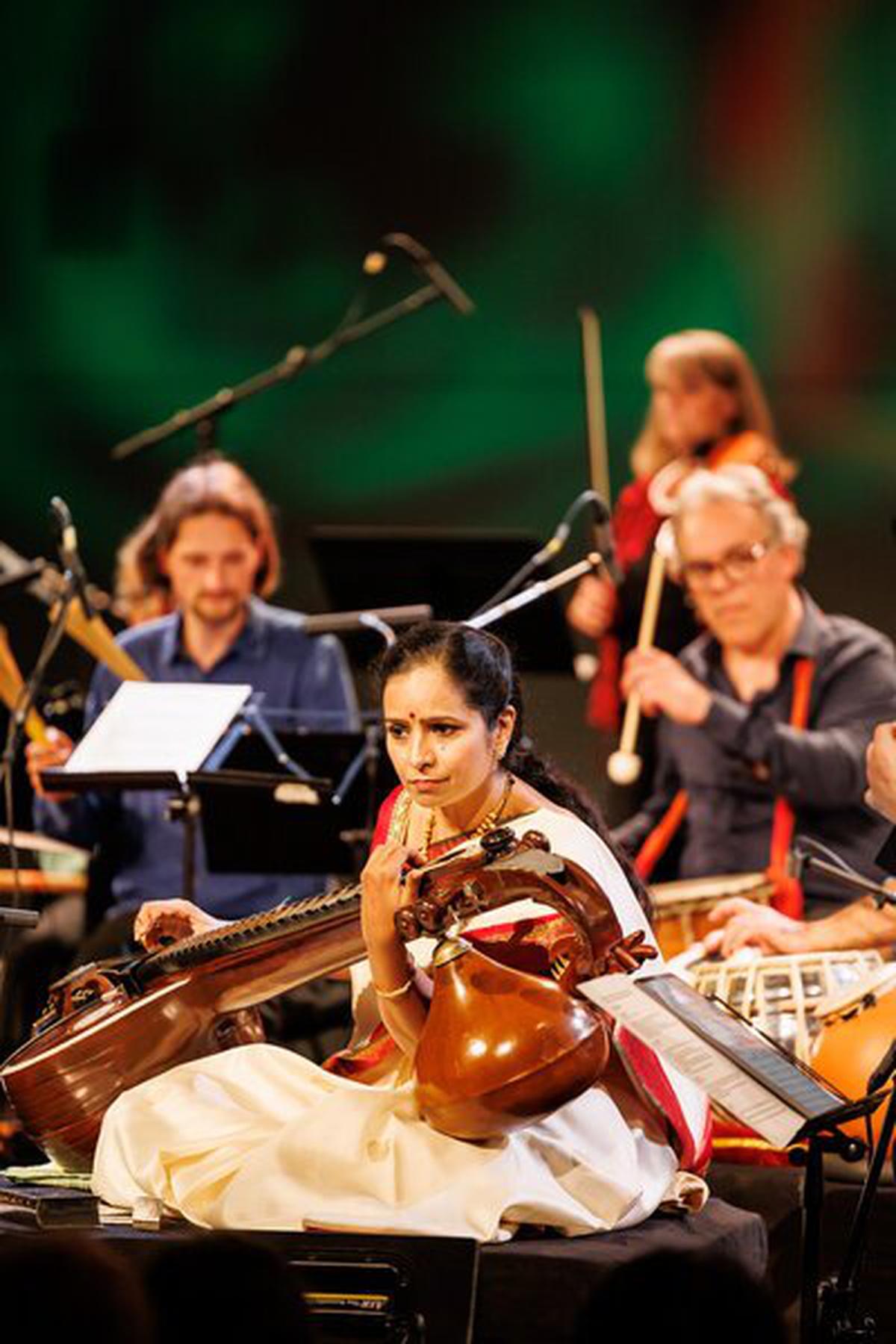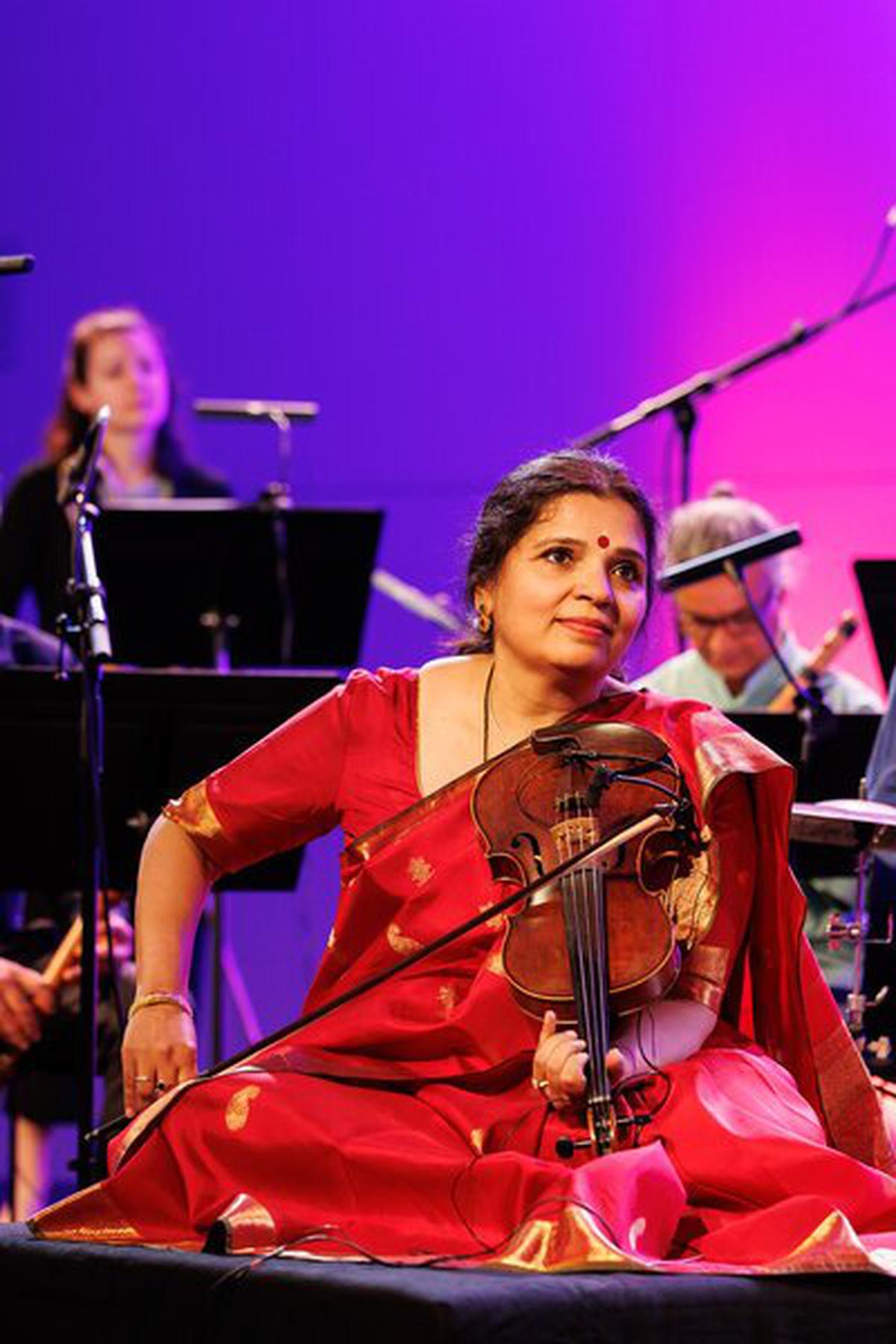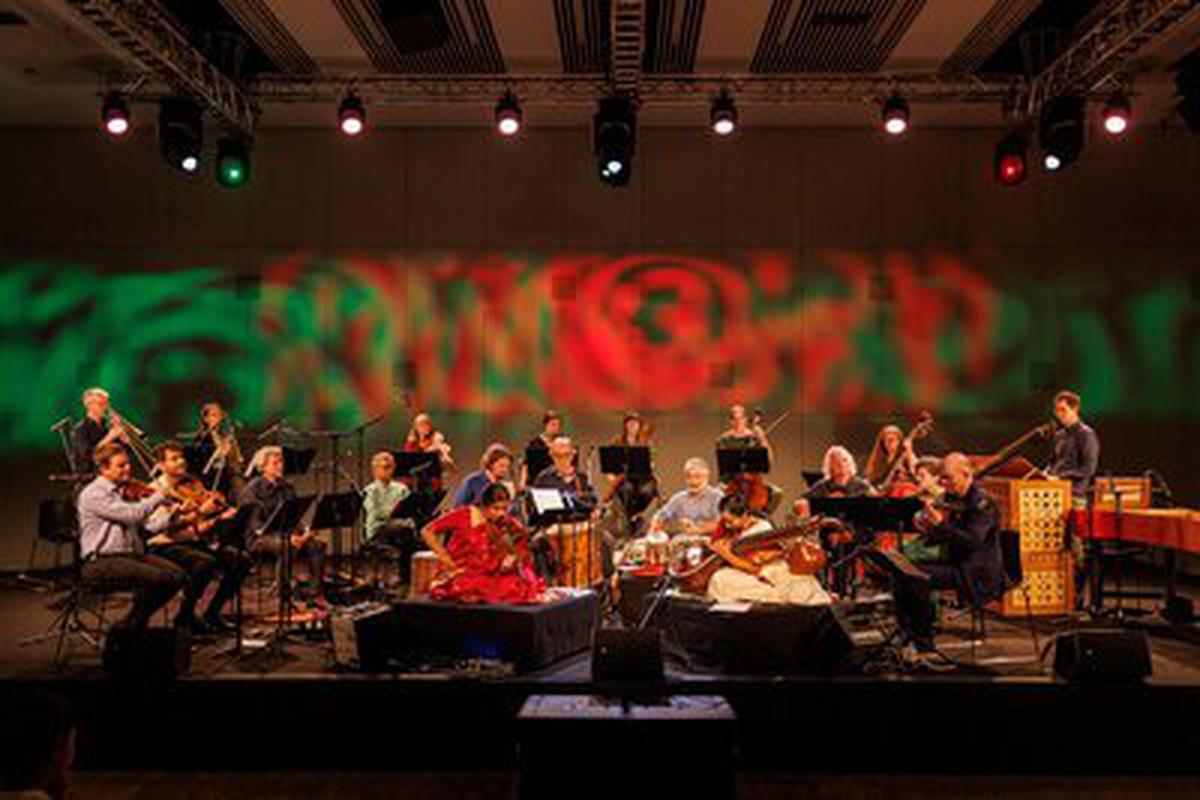When Germany’s Humboldt Forum museum became the venue of a musical experiment


Jayanthi Kumaresh and Kala Ramnath performing with members of lautten compagney BERLIN.
| Photo Credit: Frank Sperling
I’m still reeling under the magic of ‘Musical Belongings’, a project and performance, where the lautten compagney BERLIN, one of the most renowned ensembles, explores the possibilities of music beyond the colonial canon. With musicians and composers from India, Latin America, China and the Caribbean, the orchestra fosters transcultural practices. The aim is to embrace new sounds and hybrid forms.
When I was invited for this collaboration with the lautten compagney, the first thing that struck me was the venue — Humboldt Forum: SAAL 2, a museum dedicated to human history, art and culture.

Jayanthi Kumaresh
| Photo Credit:
Frank Sperling
What also made this experience memorable was collaborating with violin exponent Kala Ramnath. So it was an opportunity for Indian classical forms from the South and the North to share space with musicians from Germany. In my earlier outings with Western classical artistes, we jammed on Bach and Beethoven’s compositions, but to work with Pre-Renaissance and 16th century Baroque music was truly different. When I heard it for the first time, and following my interactions with the musicians there, I realised how it is a lot like Indian classical music, in a way that it allows for improvisation and is more free-flowing than the music that came later.
Exchange of ideas

Kala Ramnath
| Photo Credit:
Frank Sperling
The project and the process leading up to the performance was collaborative in every sense of the word. The members of the orchestra and the principal conductor, Wolfgang Katschner, were very accommodative, and receptive to our ideas. We covered everything from Baroque to the Beatles. Kala and I came up with an interesting composition, and played it in different pitches — I played in E scale and she in D, and together we came up with a scale in which she played raga Hamsadhwani and I raag Gorakh Kalyan. We created this composition in a week’s time and it was received well.
The orchestra played jubilantly along with us. In every sense, in this collaboration, there was understanding, empathy, respect, and a sense of joy.

The European and Indian musicians performing at the Humboldt Forum museum.
| Photo Credit:
Frank Sperling
It was not just the coming together of European and Indian music, but also of Indian classical styles that showcased a variety of ragas and melodic structures. In the process, we gained novel insights into the music of the two continents and the possible meeting points.
I must add that the museums in Humboldt Forum are something to speak of. They are home to some unbelievable art from India including Indian artistes and instruments. For me, the trip was also a lesson in the importance of archiving and showcase.
(As told to Akhila Krishnamurthy)

